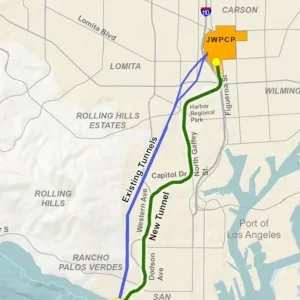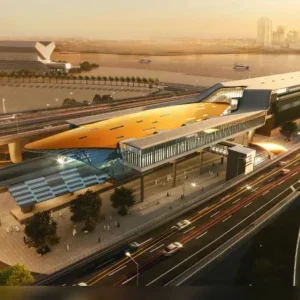Czech contractor Metrostav has been making good progress on a pair of road tunnels being excavated by drill and blast through difficult geology in Iceland, achieving both the best monthly advance ever for the firm and one of the best on the island.
Strata along the alignment consist of complex basalt formations with sedimentary interbeds, but Metrostav was able to achieve an advance of 330m on the Olafsfjordur tunnel in July, which followed 302m in April. In the week ending 20 August the contractor advanced 85m, taking the total length excavated in the tunnel to 1790m, or just over a quarter of the length to be bored since tunnelling began in November 2006.
Excavation of the second tunnel on the Trollaskagi peninsula, at Siglufjordur, started earlier, in September last year, and is 60% complete with 2175m bored out of the planned mine length of 3650m. At each portal there will be open cuts, which total 225m in length.
The tunnels will be the weatherproof parts of a shortcut between the northern towns of Siglufjordur and Olafsfjordur, the project being financed by the state-funded Icelandic Road Administration (IRA), or Vegagerdin. The current distance to drive between the towns is 60km but the route is often closed due to severe weather, which results in a longer drive of 250km. The new link is just over 14km long.
On the Olafsfjordur tube there was little groundwater encountered in the early phase of excavation but later advances encountered rising inflows that reached more than 2000 l/min. The tunnel will be 7150m long with most – 6925m – excavated by drill and blast, and the open cuts total 225m.
The cross section of the Olafsfjordur bore is 52.83m² (Norwegian profile T8.5) except for where it is widened in a dozen locations to 75.25m² for passing places, and the estimated volume of excavation to 380,000m³. The tunnel is being driven with a 5475m stretch of downhill section with a 3% incline, and a 1450m long uphill section at 1% rise.
Likewise, the Siglufjordur tunnel has downhill and uphill sections, of 2025m and 1625m, respectively, plus widened points every 500m. The estimated volume of the excavation is 200,000m³.
Overburden on the tunnels varies from 5m-600m with a consequent risk of rock burst. In terms of groundwater, while inflows of cold water have been experienced there is a risk of thermal water inflows.
Metrostav is using the ‘Scandinavian Method’ of excavation, advancing with 5m rounds, shortening to 3m in poorer ground. The contractor is probing ahead 25-27m with 6m overlap using a Axera Tamrock T11-315TCAD, and the three-boom rig is also being employed to advance to drill the face. Mostly, Titan 7000 blasting emulsion is used though it can be more problematic in weaker, more “plastic” ground. Metrostav uses conventional explosives In porous tuff. In both tunnels there is occasional pre-grouting dependent on flow rates, pressures and temperatures of the groundwater.
The Czech firm beat off both local and Norwegian rivals for the tunnel sections on the project last year, for which its Icelandic partner Hafell is undertaking the road and bridge works. The construction work is under the supervision of local consultant Geotek. Czech tunnelling consultant Ermin Stehlik is advising on the project.







